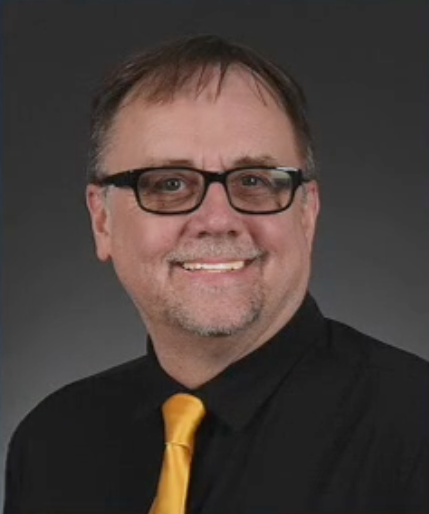PRINT REPORTING 2025 FINALISTS
FIRST RUNNER-UP
"Florida's Road Crisis: Inside 800 Lives Lost"
Bonita Miyagi & Curt Hills


ENTRY EXPLANATION
Bao Tran, 14, was killed by a plumbing van while walking to school, and he died next to a memorial marker from a previous fatality.
Danny Bishop, 22, survived the mass school shooting at Marjory Stoneman Douglas High School only to be killed while scootering to college.
Dalton Penkacik, 25, was killed by a car while walking 2.5 miles from scene where his 12-year-old brother suffered the same fate three months earlier.
Ronald Jean Baptiste, 54, and his wife, Yanique Pierre Baptiste, 45, were killed in a crosswalk in front of their 7-year-old daughter.
Ernest Coluzzi, 80, was riding a mobility scooter on a sidewalk when a driver clipped him with a truck, drug him for a half mile, pulled over, removed the scooter and continued on to work.
Their deaths are among the hundreds of horrific, untold stories uncovered by a Daily Sun investigation into how years of government inaction have created America’s worst pedestrian death crisis.
The first-of-its kind analysis of 832 deaths across 51 counties also exposes how the highest price is paid by those who need protection the most. It unmasks the alarming number of victims last year who were:
• Killed by law enforcement (10)
• Slain in wheelchairs (11)
• Struck down in school zones (21)
• Killed while trying to save others (8)
• Run over by trains, buses and utility trucks (65)
• Senior citizens (at least 248)
As state officials impeded the Daily Sun’s information requests at almost every level, its journalists spent 10 months traveling over 3,200 miles to unearth these stories. The reporters accomplished this even while besieged by back-to-back hurricanes Helene and Milton.
Among their findings:
• Florida is now home to six of America’s 10 deadliest roads for pedestrians.
• Its death surge is a massive national outlier, on both total number and per-capita bases.
• The crisis is unfolding statewide, year-round and on pace for a new record death toll in 2025.
The investigation resulted in proposed legislation at the state and national level, including the federal Pedestrian Protection Act that would limit the size of huge trucks and SUVs.
It also led to $214 million in state pedestrian safety projects; speed zone cameras in seven school districts; the first “World Day of Remembrance for Road Traffic Victims” in Florida’s largest city; and a massive traffic enforcement operation among 12 agencies that led to 893 traffic stops in just eight hours on the deadliest road in America.
Still, the crisis continues to unfold, and four more pedestrians were killed on that road in the next four weeks alone.
Other victims killed that month included: one person killed by a police officer, one run over by a garbage truck, two children killed in school zones, two people killed while using wheelchairs, a National Guard member killed on a military base, an FDOT road ranger killed in an emergency lane and a married senior citizen couple killed in a crosswalk less than a mile from their home.
In 11 cases, the driver did not even stop.
View entry
Second runner-up
"The Toxic Threat to Our Food"
Hiroko Tabuchi

ENTRY EXPLANATION
For decades, the Environmental Protection Agency has encouraged American farmers to use sludge from sewage-treatment plants as cheap fertilizer. In 2024, one single-minded reporter, Hiroko Tabuchi of The New York Times, revealed this policy’s devastating implications for farmers, and for the American food supply. And she revealed that the EPA knew of the dangers all along.
In a strong validation of this reporting, the EPA on Jan. 14 for the first time warned that “forever chemicals” in sludge-based fertilizer could harm human health. The EPA said that the risks could potentially exceed the agency’s own safety thresholds, “sometimes by several orders of magnitude.”
Tabuchi’s reporting showed:
—How this sewage sludge is often heavily contaminated with “forever chemicals,” known as PFAS, that cause birth defects and other serious ailments;
—These toxins, which have been linked to cancers, liver damage and other serious health effects, have reached the food we eat via sludge fertilizer, which can dangerously concentrate the chemicals;
—The EPA knew a quarter-century ago that sludge fertilizer could contain these chemicals at risky levels. Yet the agency continued to promote sludge fertilizer to farmers;
—Fertilizer makers (led by a company owned by Goldman Sachs) have lobbied to block lawsuits against their product.
Tabuchi, one of the most accomplished investigative reporters on the global climate and environment beat, found this story when, on a Midwest reporting trip, she met a farmer whose land had been condemned because of contamination from fertilizer. She set out to understand whether this was an isolated incident. She discovered farmers and families across the country facing this crisis.

